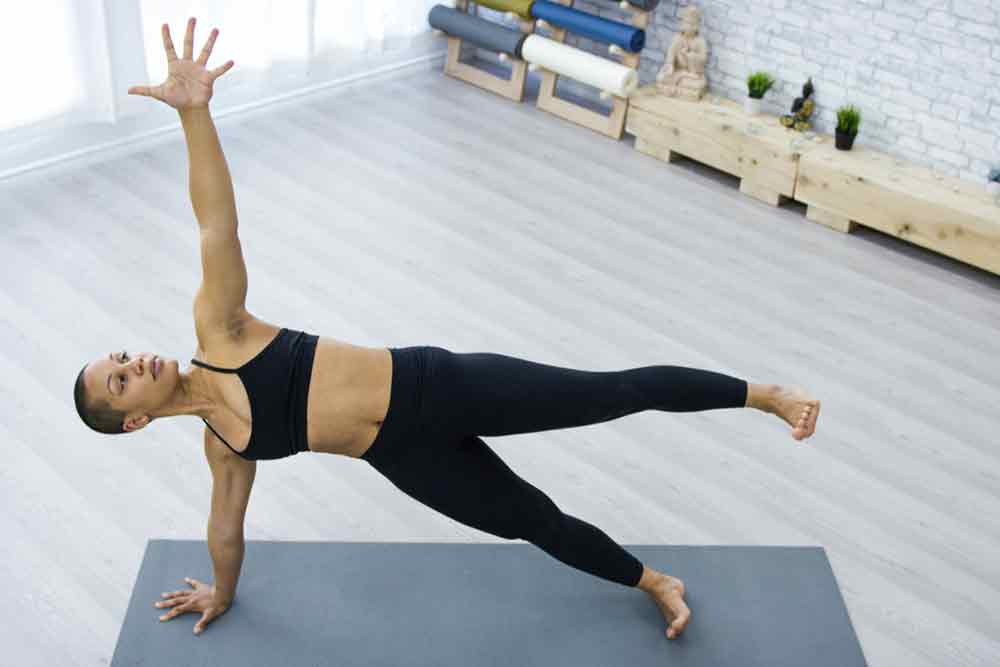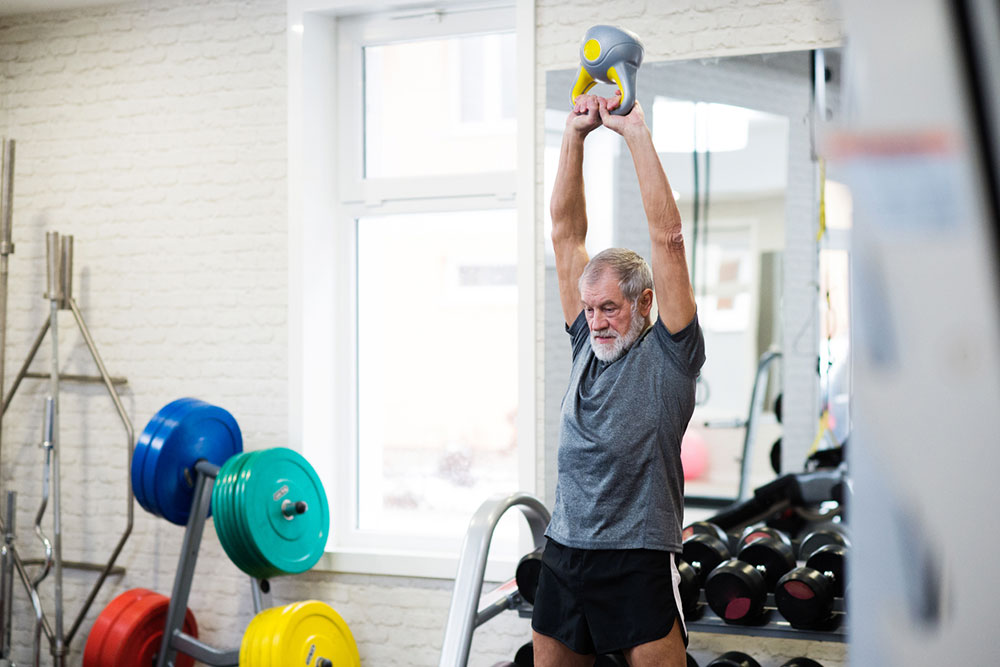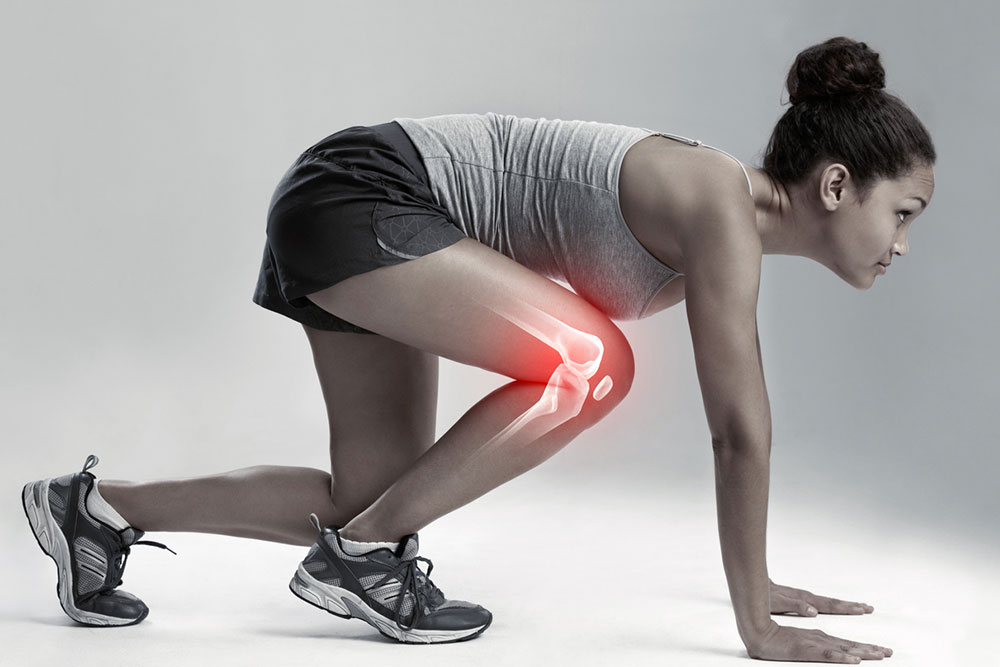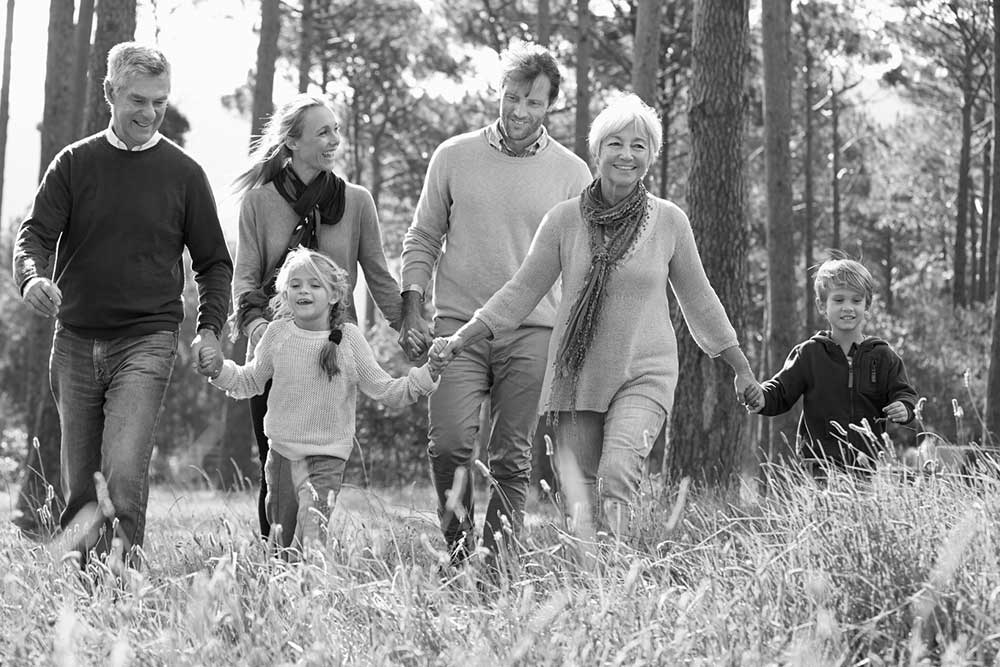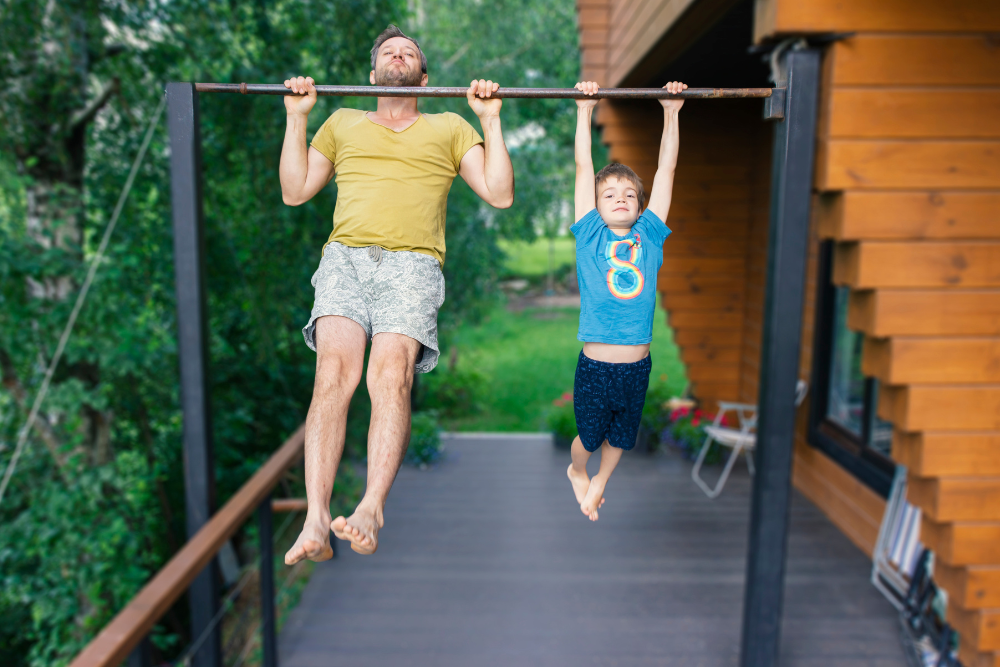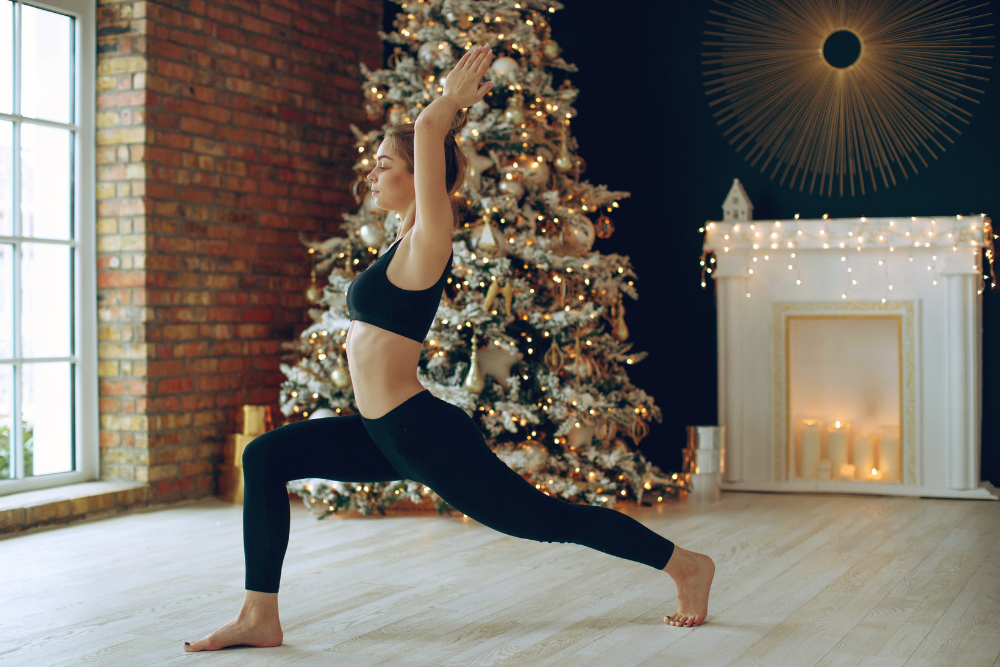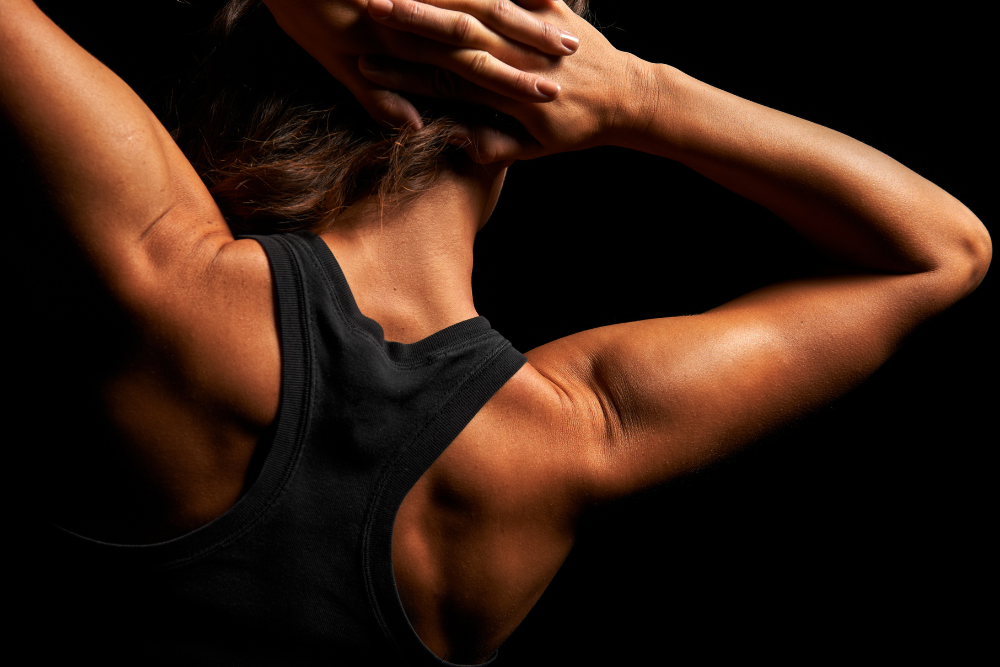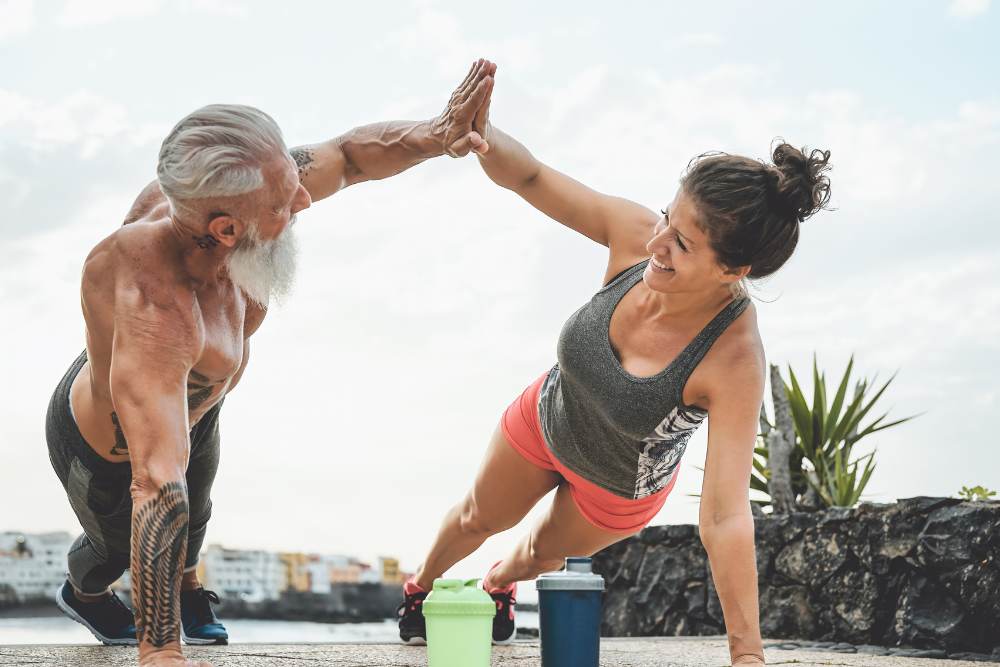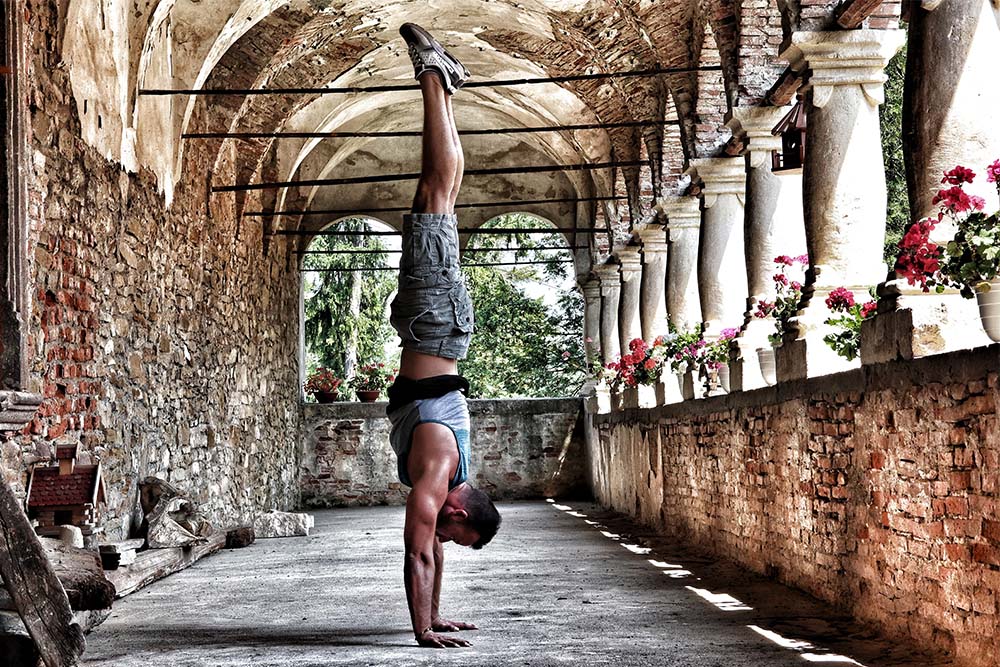Strength As A Safety Net

Jon Carlock
As time passes and we age, we naturally become more vulnerable to injury. Somewhat of a numbers game, the longer we spend on this planet, the odds increase that we will get hurt at some point. When we get older, we also become more prone to balance-related injuries that can result in significant setbacks. But rather than accept these injuries as a certain fate, there are ways to mitigate the effect of aging on our bodies by building and maintaining strength. As you age, you naturally start to lose muscle loss and function. This begins happening in your thirties, and if you’re physically inactive, you’re at risk of losing a higher percentage of your strength than if you exercise regularly throughout your life.
It’s true that sometimes hips fail and bones break. Or perhaps a major bypass surgery leaves us out of commission. When we’re faced with a long-term recovery, there is no getting around the time it will take for our body to heal. But having a foundation of strength can speed up the recovery process, and help us get back to former levels of activity.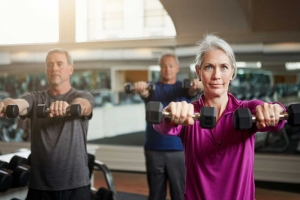
Related Article: High-Intensity Training Exercise Helps Reduce Migraines
Faster Recovery & Injury Prevention
In the beginning, the initial investment into a strength training program will have a greater physical cost at first and may be quite difficult for some. But this investment will prove worthwhile in the long run, allowing for a faster return to mobility. When you’re coming out of surgery in a stronger state, it will be easier for you to tackle your physical therapy, and get back to living your life.
I’ve seen firsthand how injured world-class athletes are able to re-enter competition sooner because they made strength training a priority throughout their careers. But beyond helping us heal quickly, strength plays a vital role in preventing the injuries that can leave us out of the game in the first place. Balance injuries are often the result of a slip or fall. But the stronger we are, the better we are able to regain balance or control the way we go down. So while you may experience a trip from time to time, you’ll be less likely to be injured if you can generate the force to recover.
Exercise Enhances the Immune System
We often see the older population suffer from illness and poor health. People are living longer, but not a lot of the aging population is living well and healthy. The study by Duggal et al. (2018) concluded that along with having a positive effect on muscle mass and strength, regular, life-long exercise enhanced the immune system of older adults. Thymus, an organ that makes immune cells called T cells typically starts to shrink in your twenties, producing fewer T cells, but this study found that in the physically active older participants, their thymuses were making as many T cells as those of a younger person (Duggal et al. 2018). More immune cells mean an enhanced immune system as you age.
Exercise and Stress
Stress in daily life can shorten telomere length over time, but exercise stress may be an effective buffer for slowing telomere shortening and cellular aging. A study in PLoS One examined the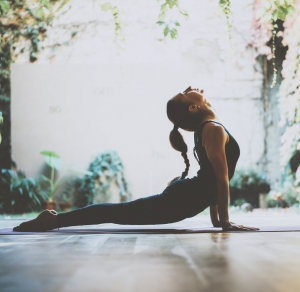 role of exercise for moderating stress-induced telomere shortening (Puterman et al., 2010). 63 post-menopausal women completed a perceived stress scale, recorded their physical activity (PA) levels, and had measurements taken of the telomere length in their white blood cells. The researchers found that exercise significantly moderated the effects of perceived stress on telomere length! However, dosage was important in this relationship; there is a point at which increasing PA is no longer associated with shorter telomeres. Participants did not have any increased benefits in PA reduction if they exercised more than 40 minutes a day over three days. When you are stressed and busy you are less likely to exercise- but this research shows that moderate exercise during your most stressful days confers the greatest benefits to longevity and healthy aging.
role of exercise for moderating stress-induced telomere shortening (Puterman et al., 2010). 63 post-menopausal women completed a perceived stress scale, recorded their physical activity (PA) levels, and had measurements taken of the telomere length in their white blood cells. The researchers found that exercise significantly moderated the effects of perceived stress on telomere length! However, dosage was important in this relationship; there is a point at which increasing PA is no longer associated with shorter telomeres. Participants did not have any increased benefits in PA reduction if they exercised more than 40 minutes a day over three days. When you are stressed and busy you are less likely to exercise- but this research shows that moderate exercise during your most stressful days confers the greatest benefits to longevity and healthy aging.
Related Article: Three Types of Exercise for Reducing Anxiety
Resistance Training and Aging Prevention
Making resistance training part of your daily routine imbued lifelong benefits. Even if you haven’t been keeping up with hitting the gym it is never too late to start or to pick it up again; starting later in life still has benefits to aging outcomes. Resistance training has to be more than a reactive behavior to injury or falls and should be started as soon as possible (even to help prevent age-related injuries and falls). While longer qualitative data following patients’ muscle wasting and relative strength maintenance is needed in the scale of decades, the benefits of resistance training even in the short term and using self-reported methods cannot be ignored. Start hitting the gym if you can, pump some iron, stress your muscles! It will help in the long run.
It’s Never Too Late
Of ,course it’s ideal to maintain strength throughout our lives, but no matter if you’re starting over or starting later in life, know that there is always the potential to build strength. Studies have found that adults in their twenties on up through their nineties saw the same relative gains by engaging in a strength training program.
If you’re just getting started, a personal trainer can help you begin building strength safely so you don’t risk a re-injury. I suggest partnering with a professional trainer who has both an academic foundation as well as diverse experience helping clients meet their fitness goals. Through scientifically-grounded planning and programming, your trainer can develop an efficient system that will help you develop the skills and strength you need prevent injury and recover safely. Their trained eye can assess your abilities in ways that are hard to detect for yourself, and together you can develop a progression that’s right for you and your body. We cannot stop the passage of time or prevent injury absolutely, but we can work to become more durable, powerful beings that are harder to slow down.
(adsbygoogle = window.adsbygoogle || []).push({});
You Might Like:
5 Creative Hip Strengthening Exercises
Ryan Cross, B.A. Hons (Kin), MScPT, FCAMPT Registered Physiotherapist in Sarnia, Ontario, Canada The importance of hip strengthening can’t be overstated. In clinic, weakness in the muscles around the hip contributes to pain and injury...Increase Strength, Increase Lifespan
Katie Rose Hejtmanek, PhD, Anthropologist With a significant portion of the world’s population aging, it is important to know and understand how best to prevent bone and muscle loss, to decrease rates of chronic illnesses (such...Masters Athletes Advice To Their Younger Self
We asked champion masters athletes what advice would you give your younger self? Forever Fit Science athletes Tunde Ridley, Steven Head, Nick Berra, and Ed Roffey provide useful and funny information to athletes at every...New Exercise Recommendations For Osteoporosis
Sara Thompson – M.Sc. in Exercise Science Osteoporosis is characterized by low bone mineral density, decreased bone strength, and an increased risk of falling. According to the National Osteoporosis Foundation, 9.9 million Americans have osteoporosis,...16-Week Training Program to Help Promote Health
Julia Basso A recent article I wrote focused on the beneficial effects of a multimodal exercise program on “inflammaging”, or the phenomenon of increased brain inflammation as we age. The same group that conducted this...Meet Master Baseball Player Steven Head
Meet 59 year old Forever Fit Science master athlete Steven Head from McLean, VA. Head is a Master Baseball Player and Master Trainer at Sport + Health, Veteran of the U.S. Air Force, and Masters...(adsbygoogle = window.adsbygoogle || []).push({});

